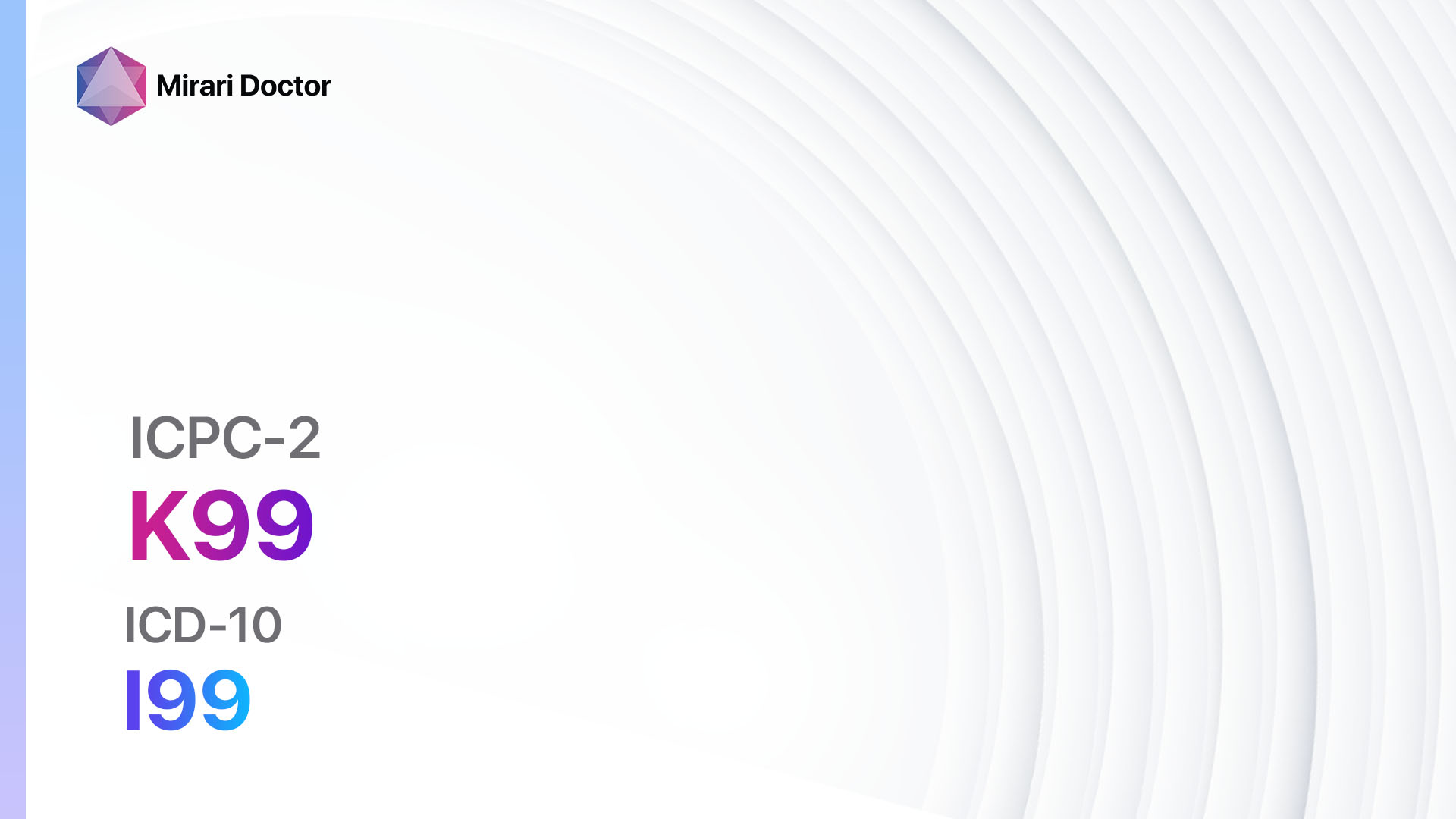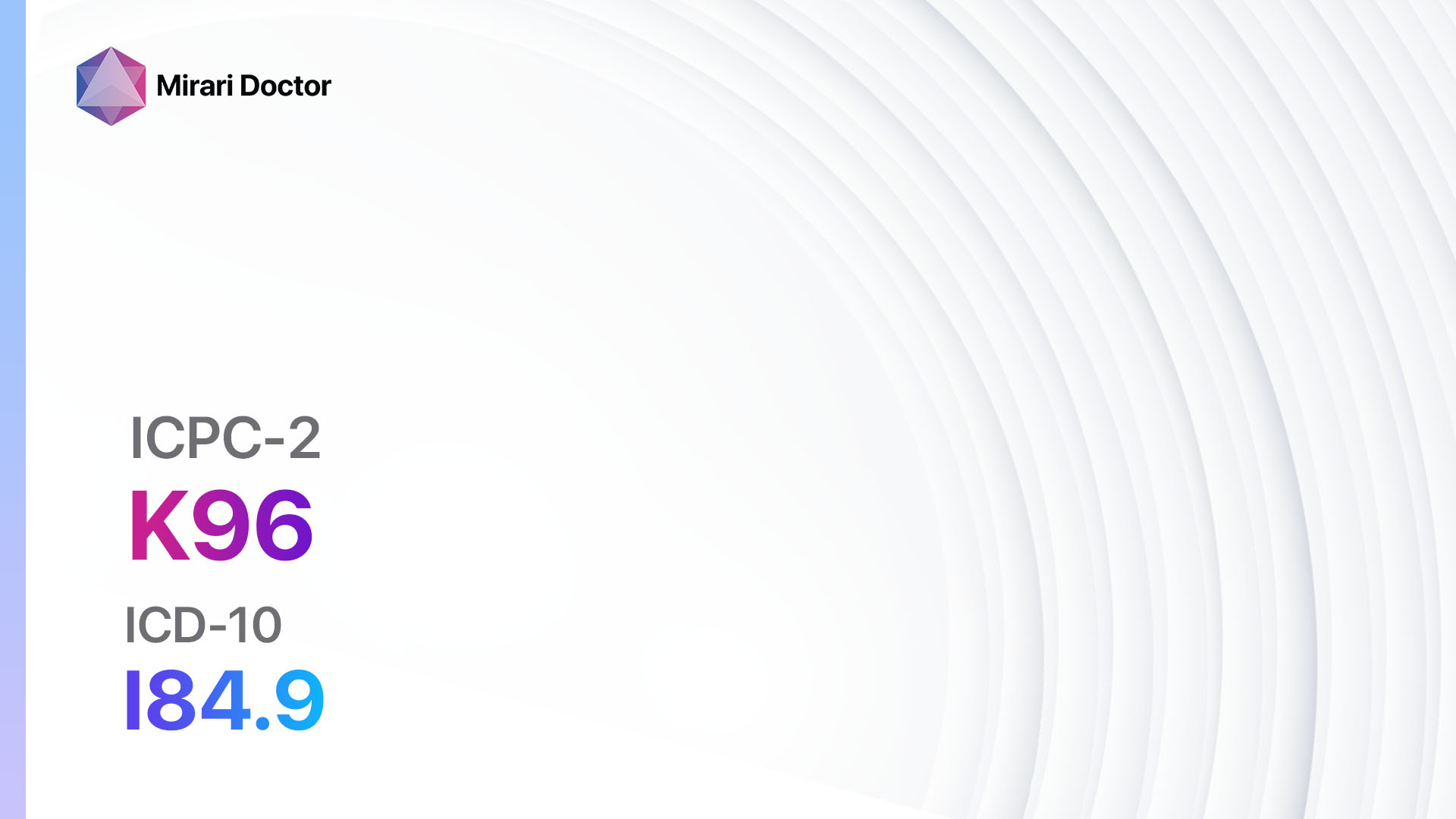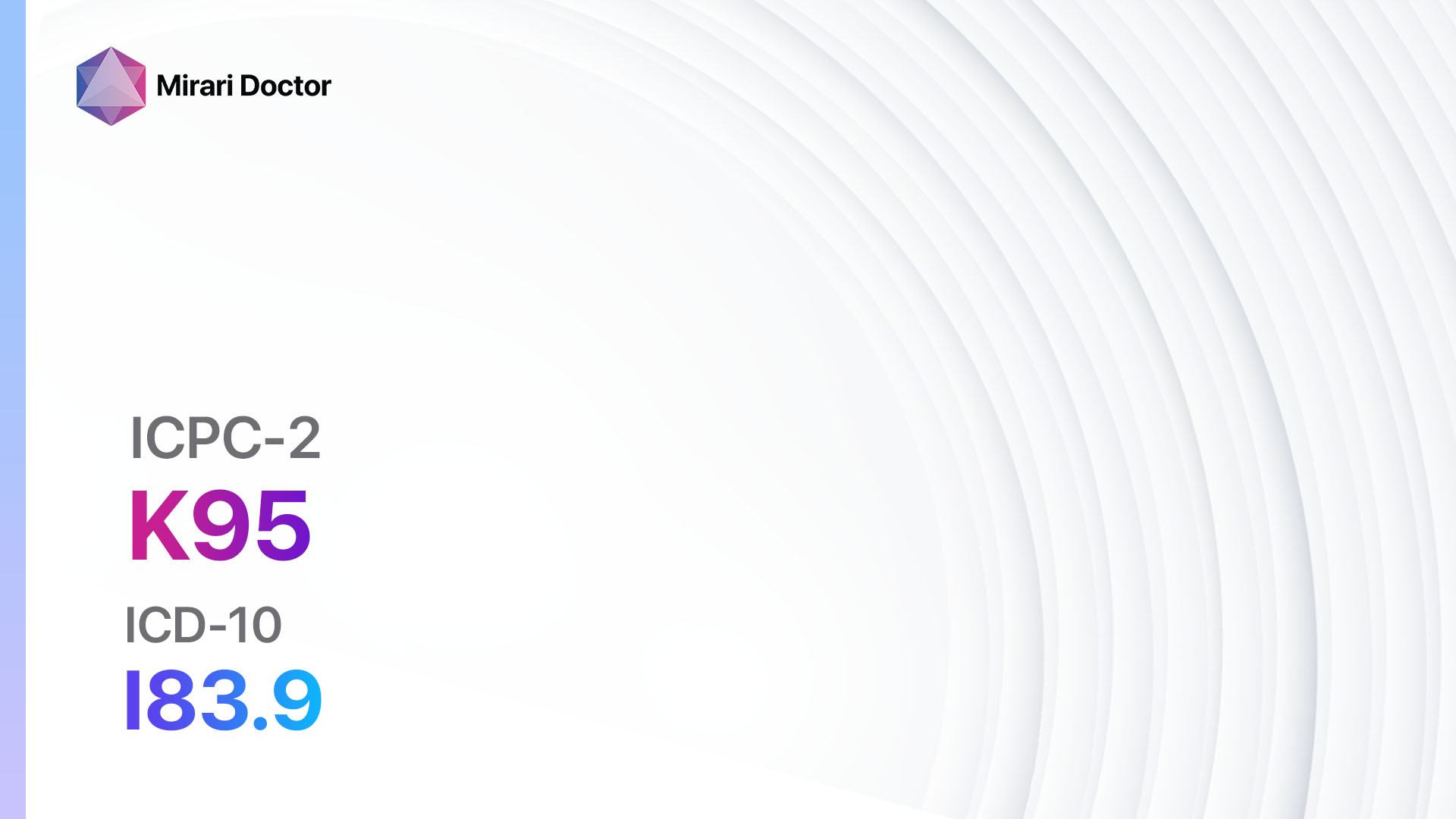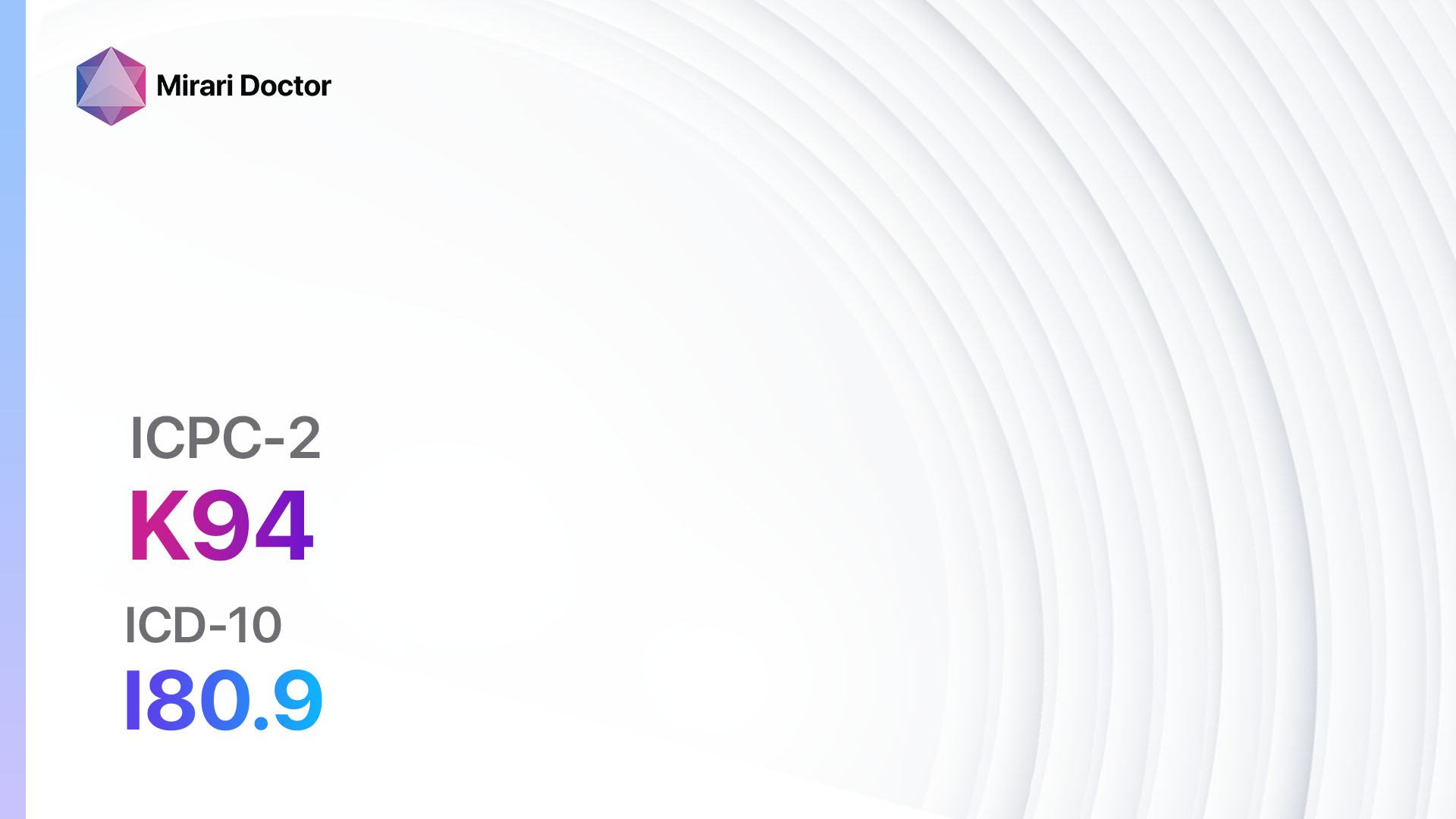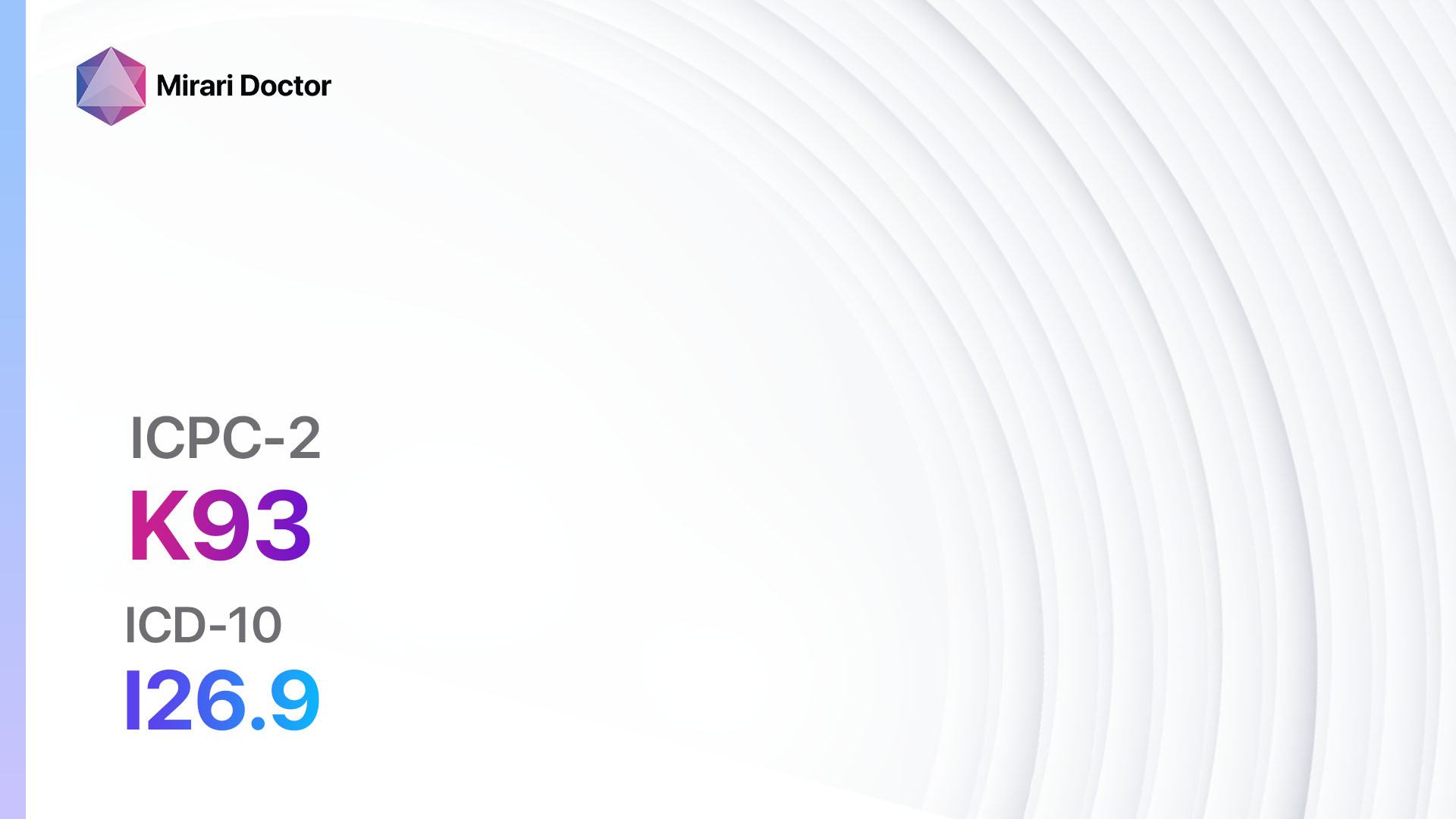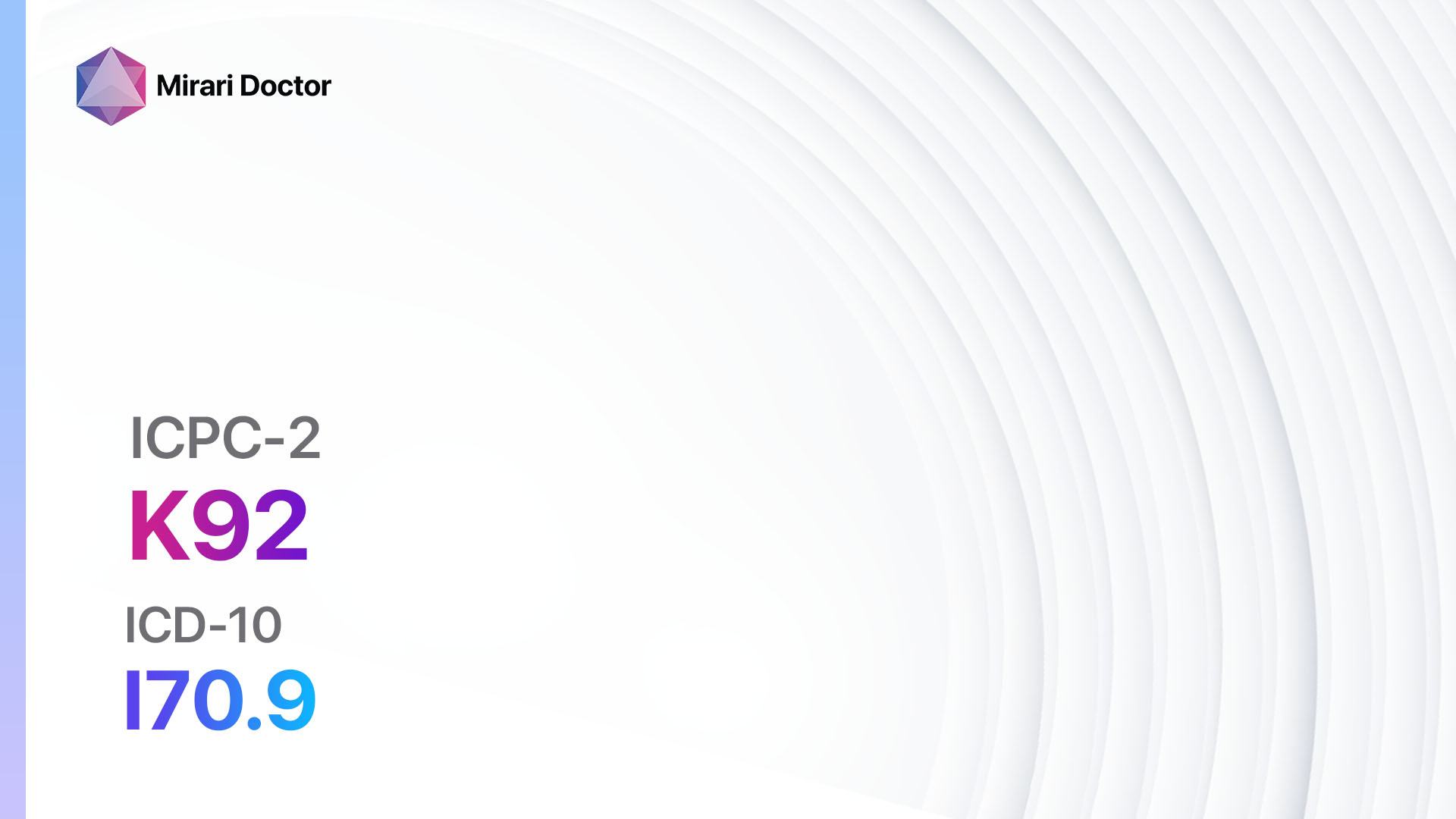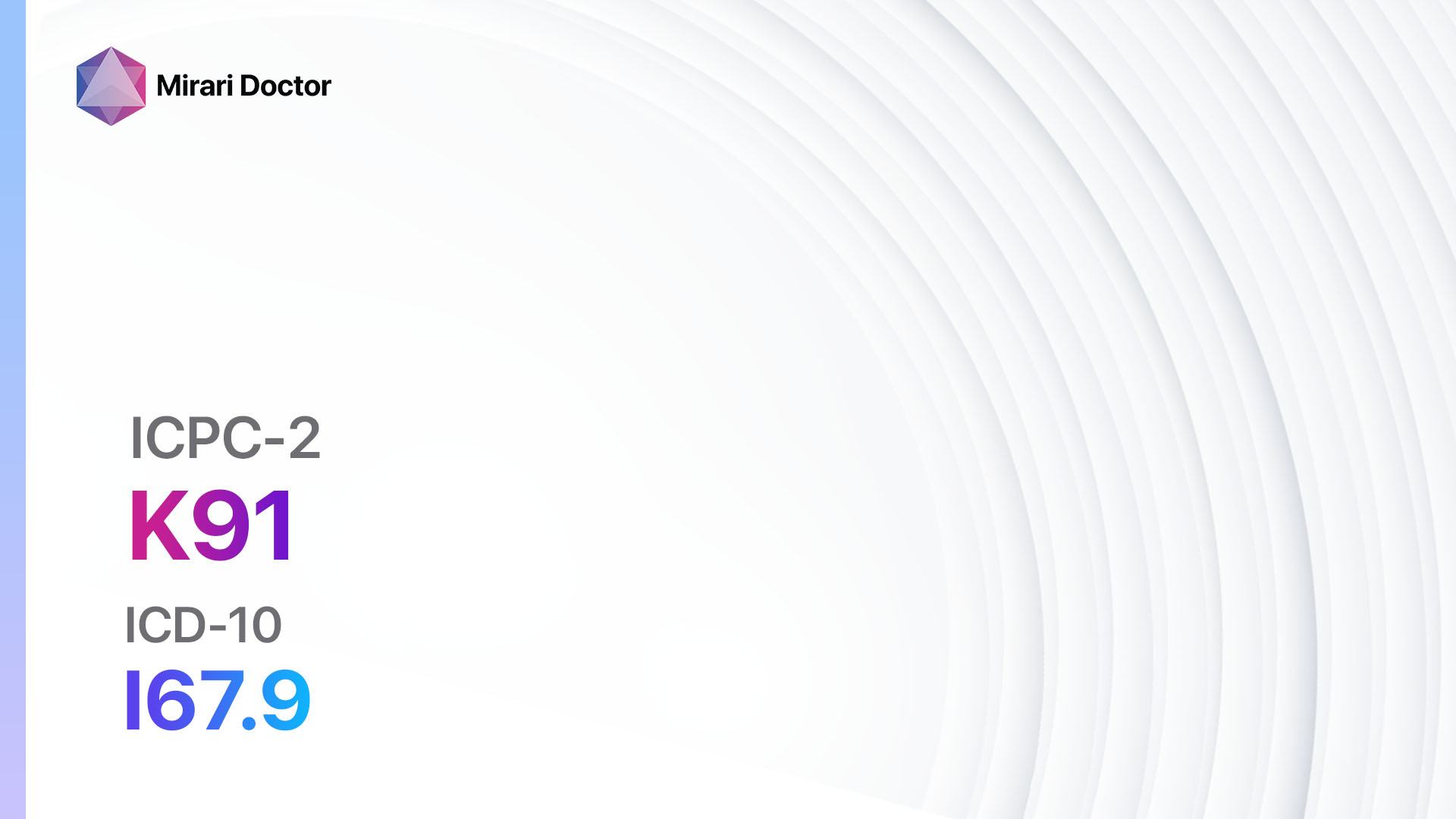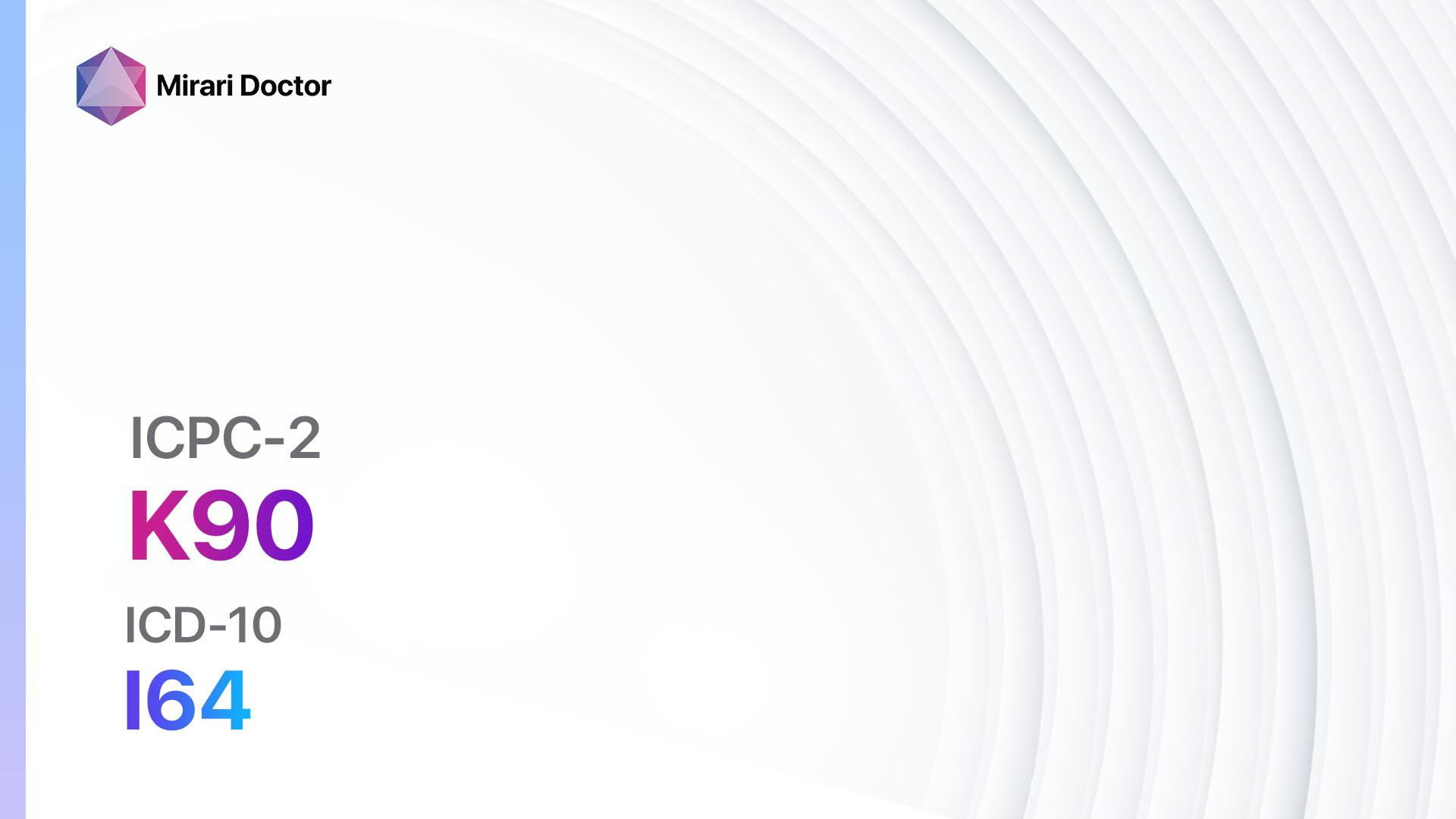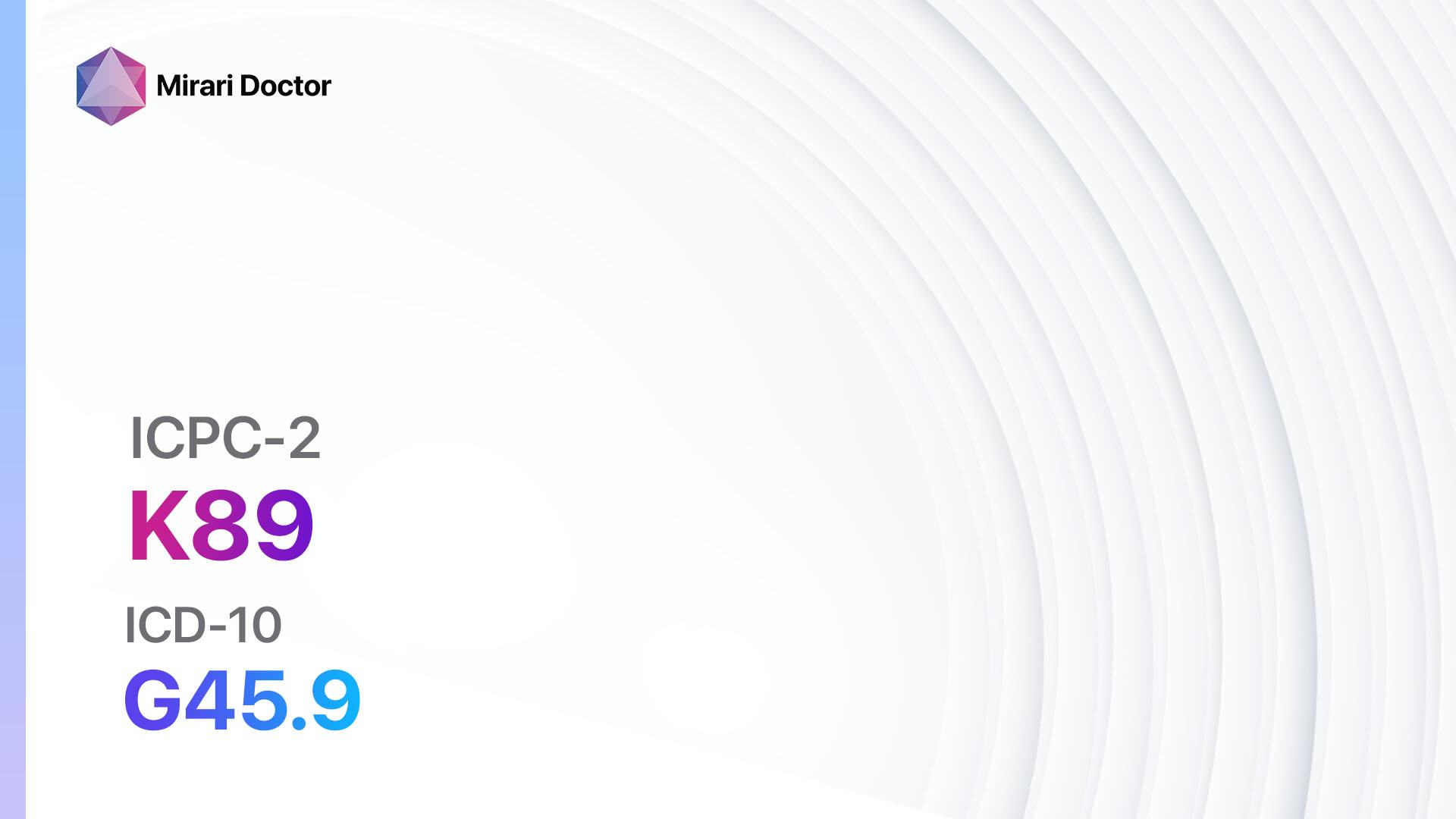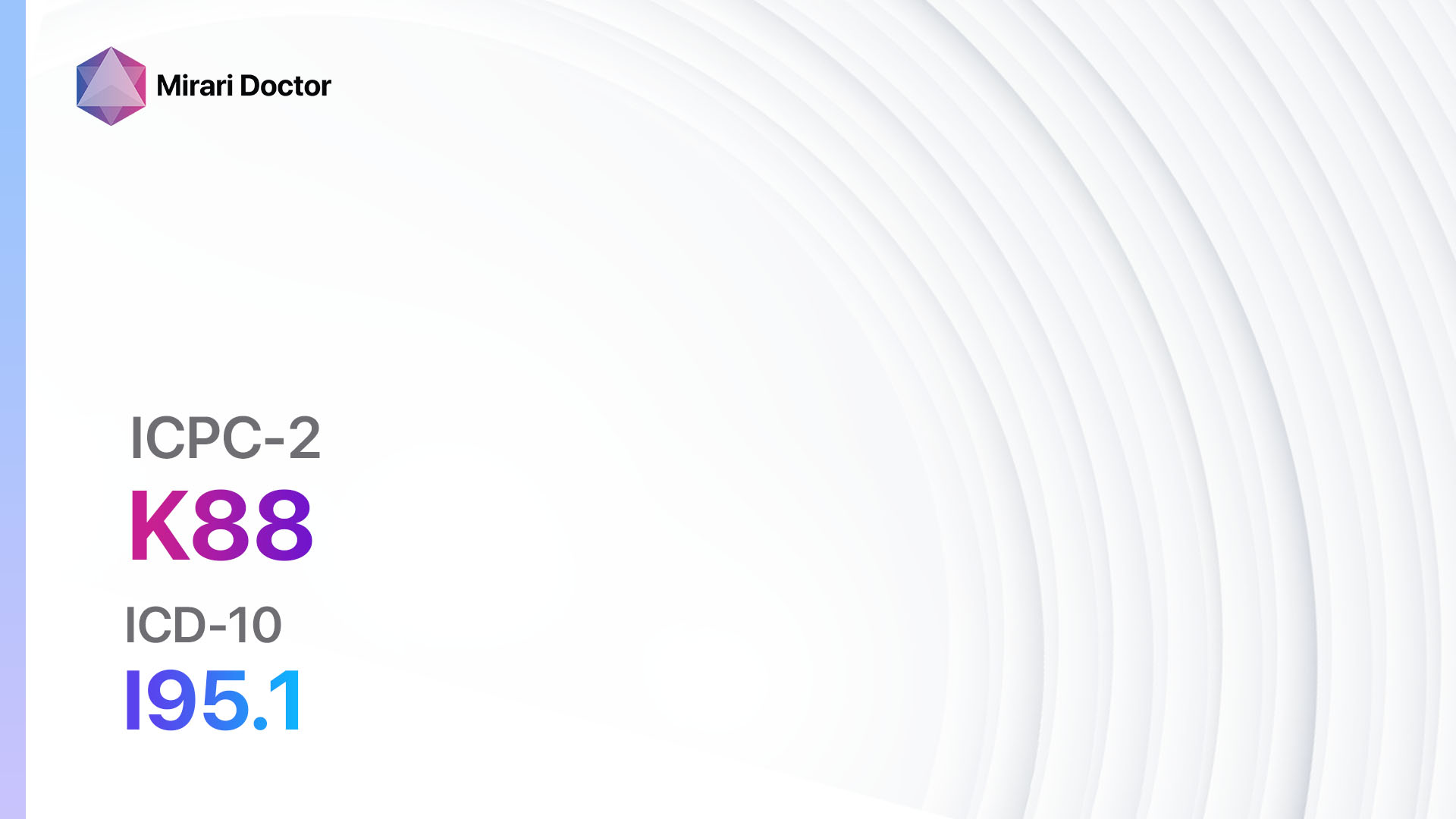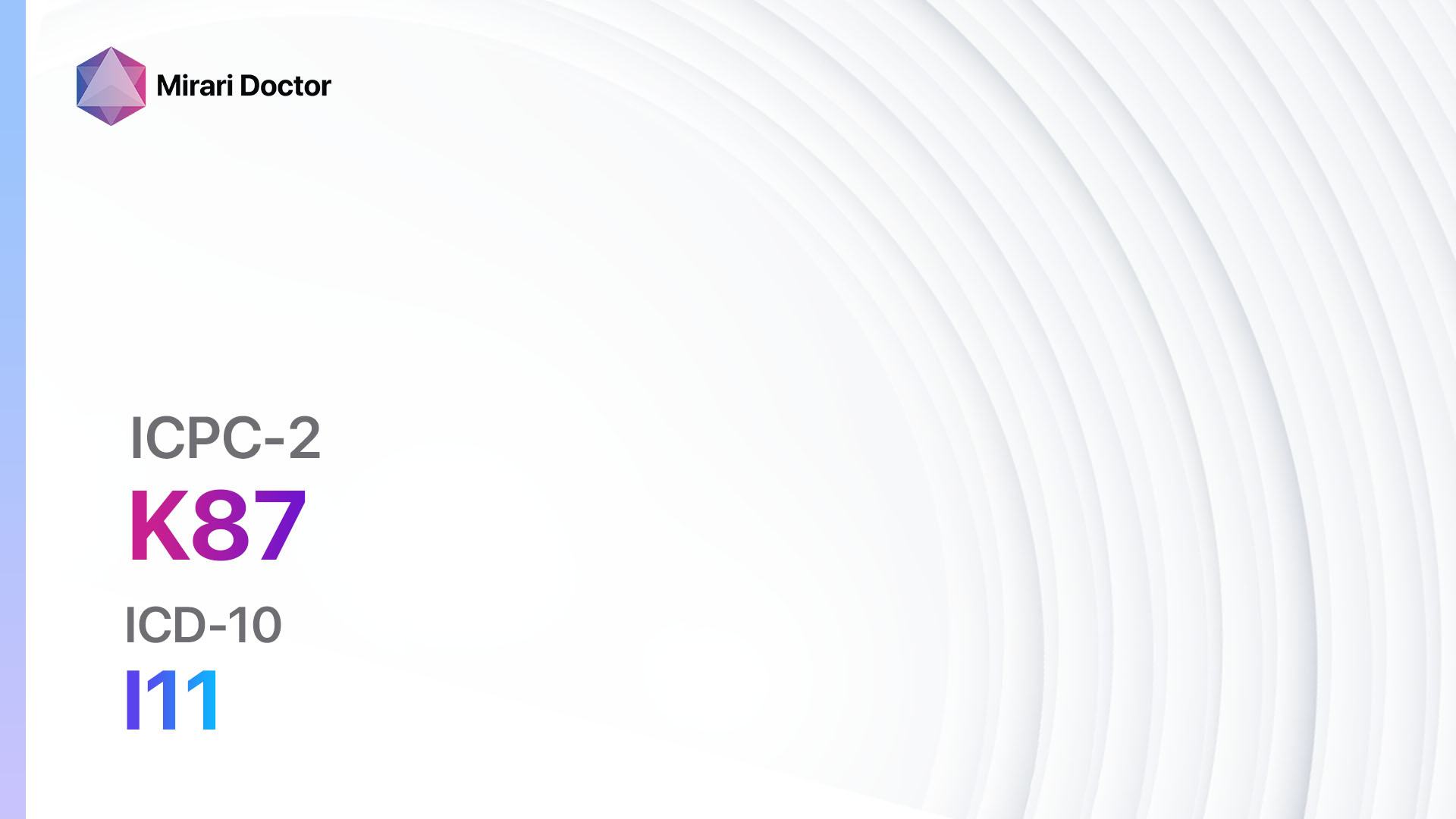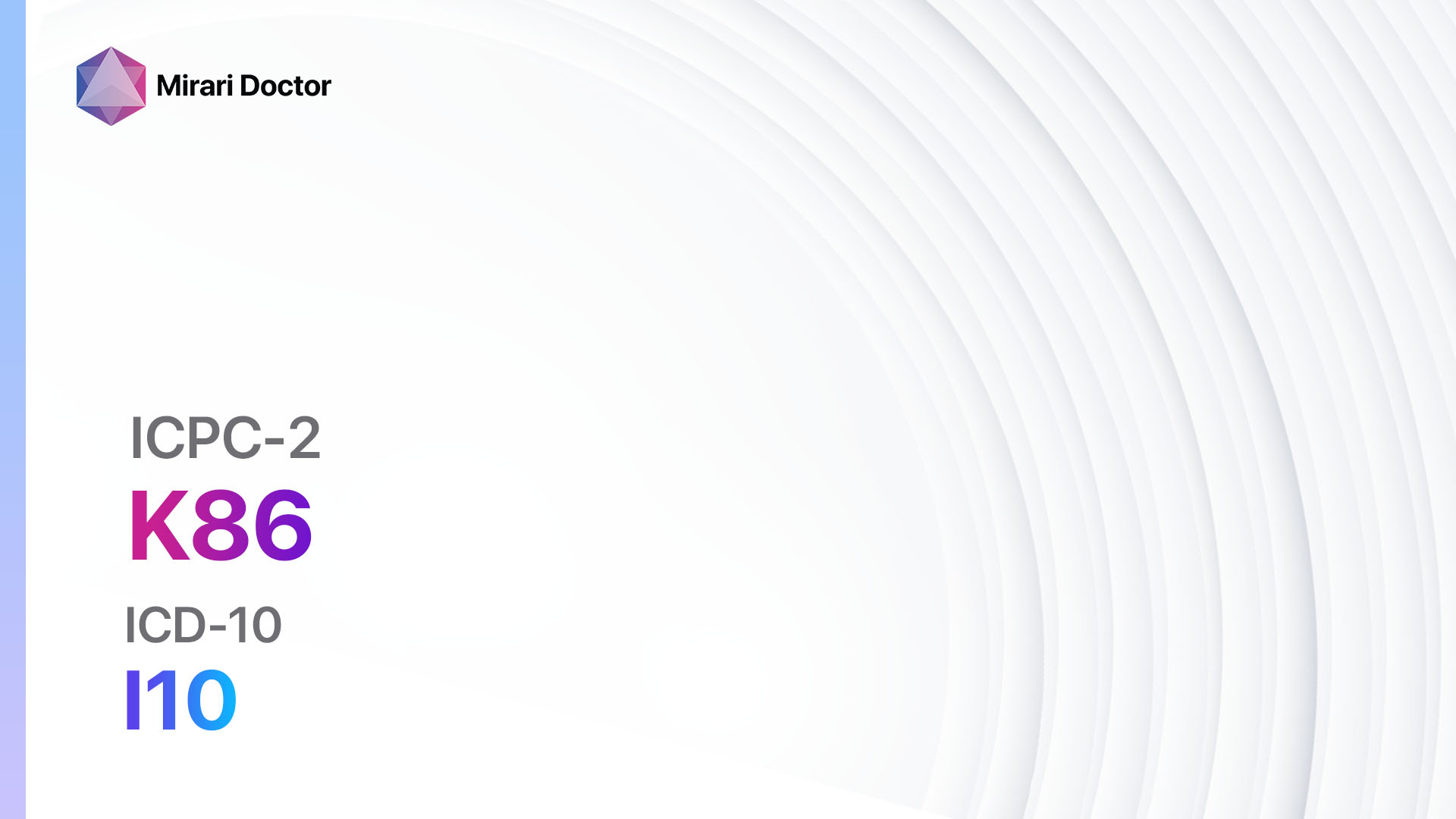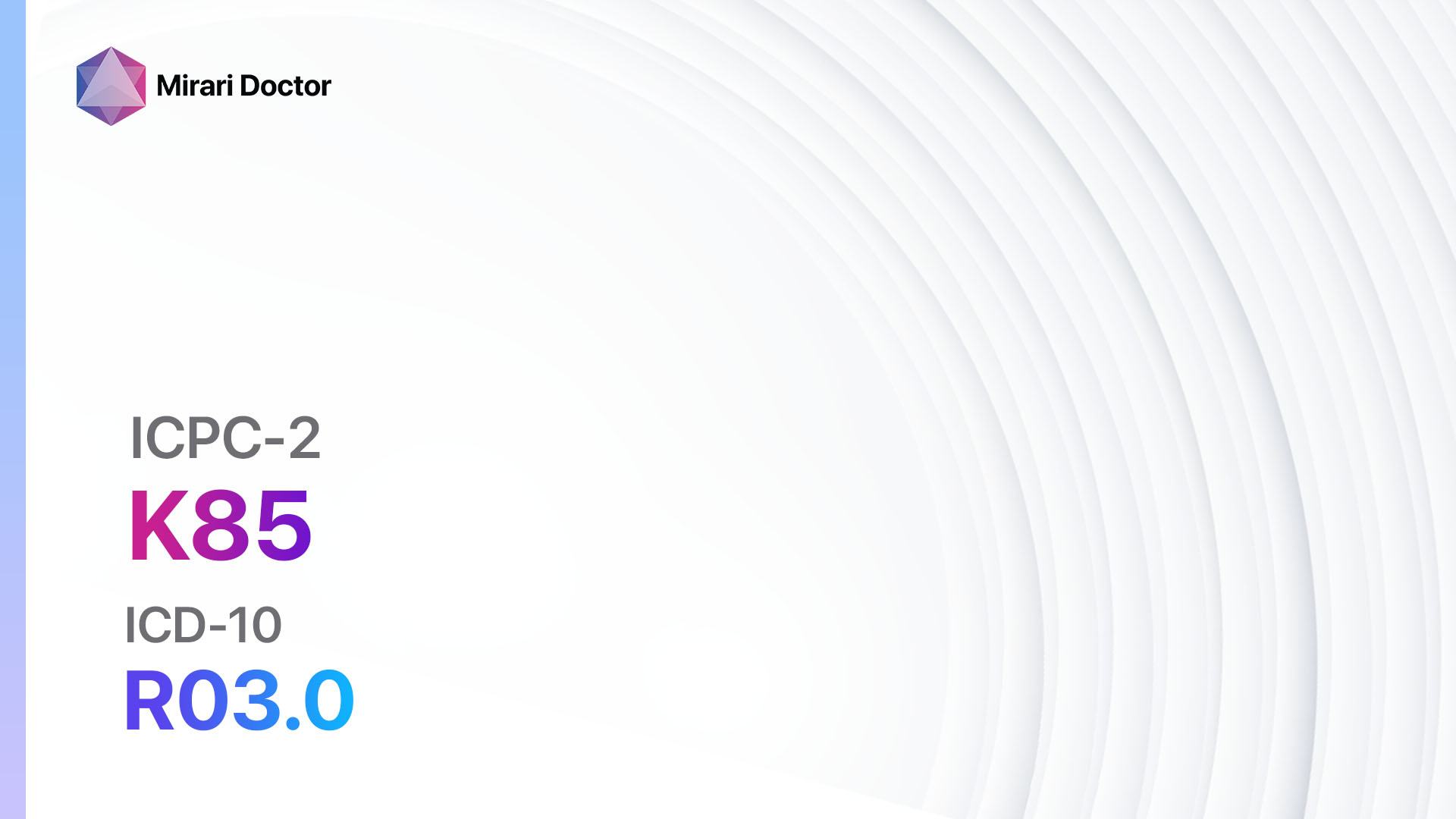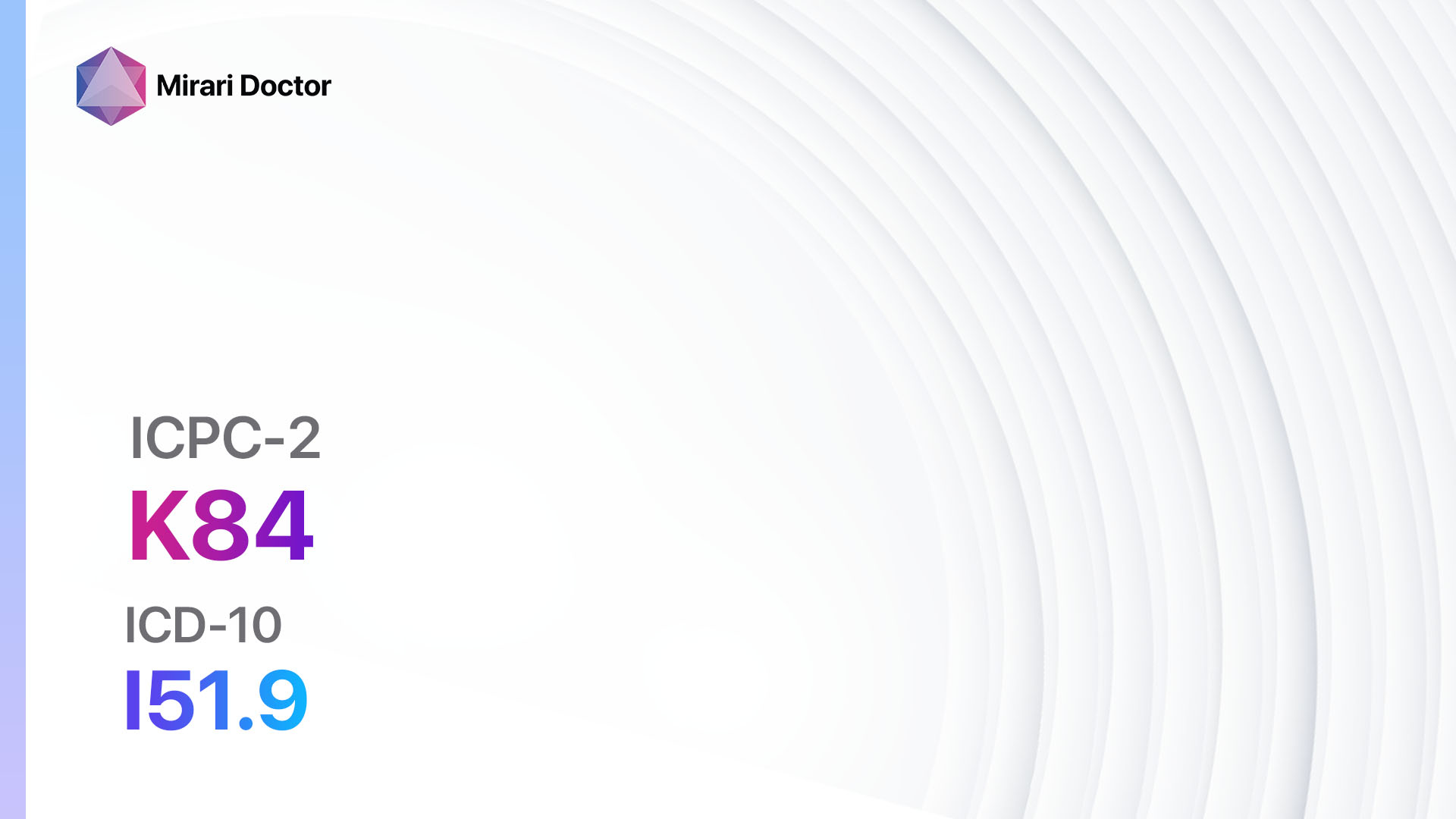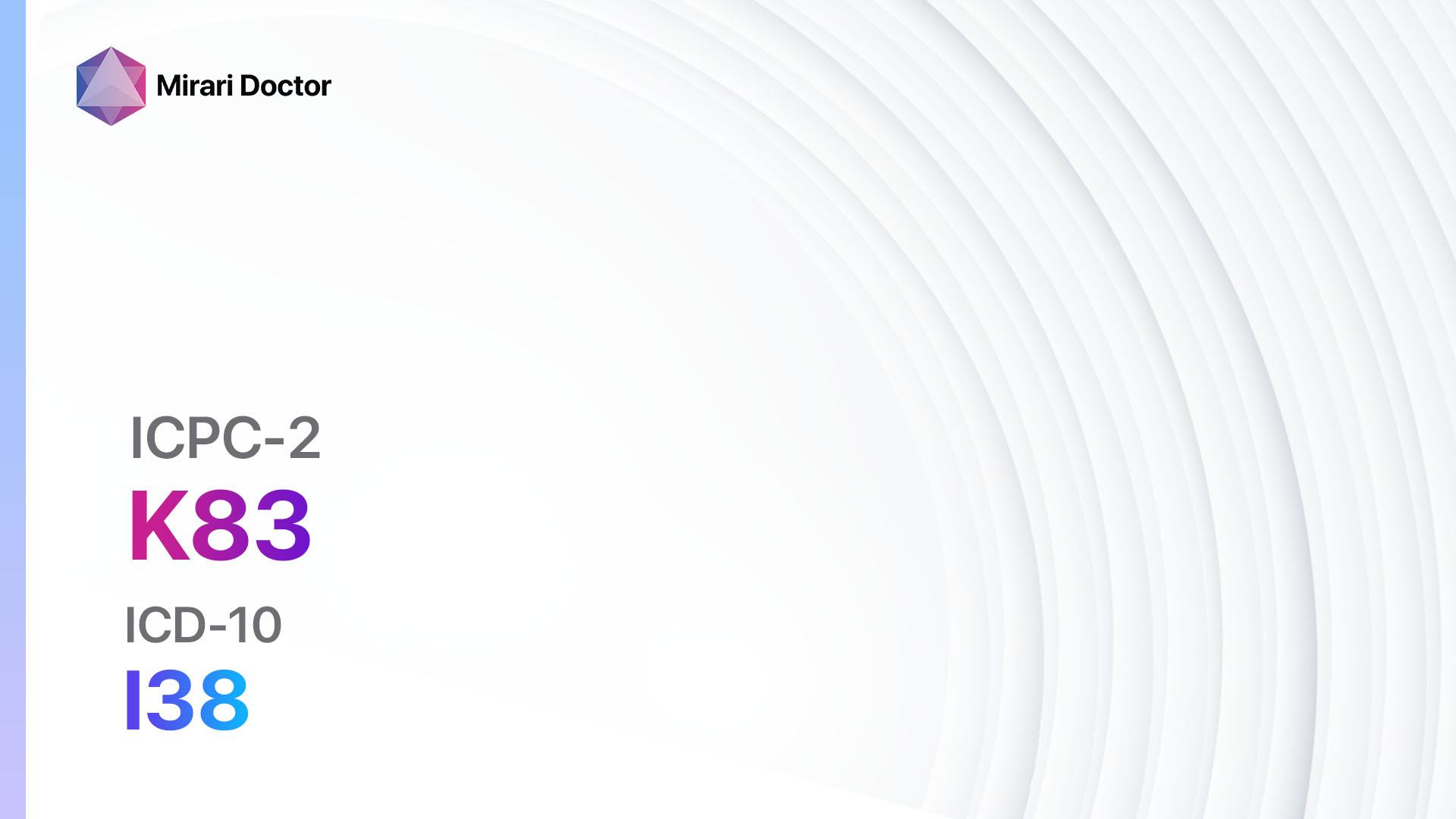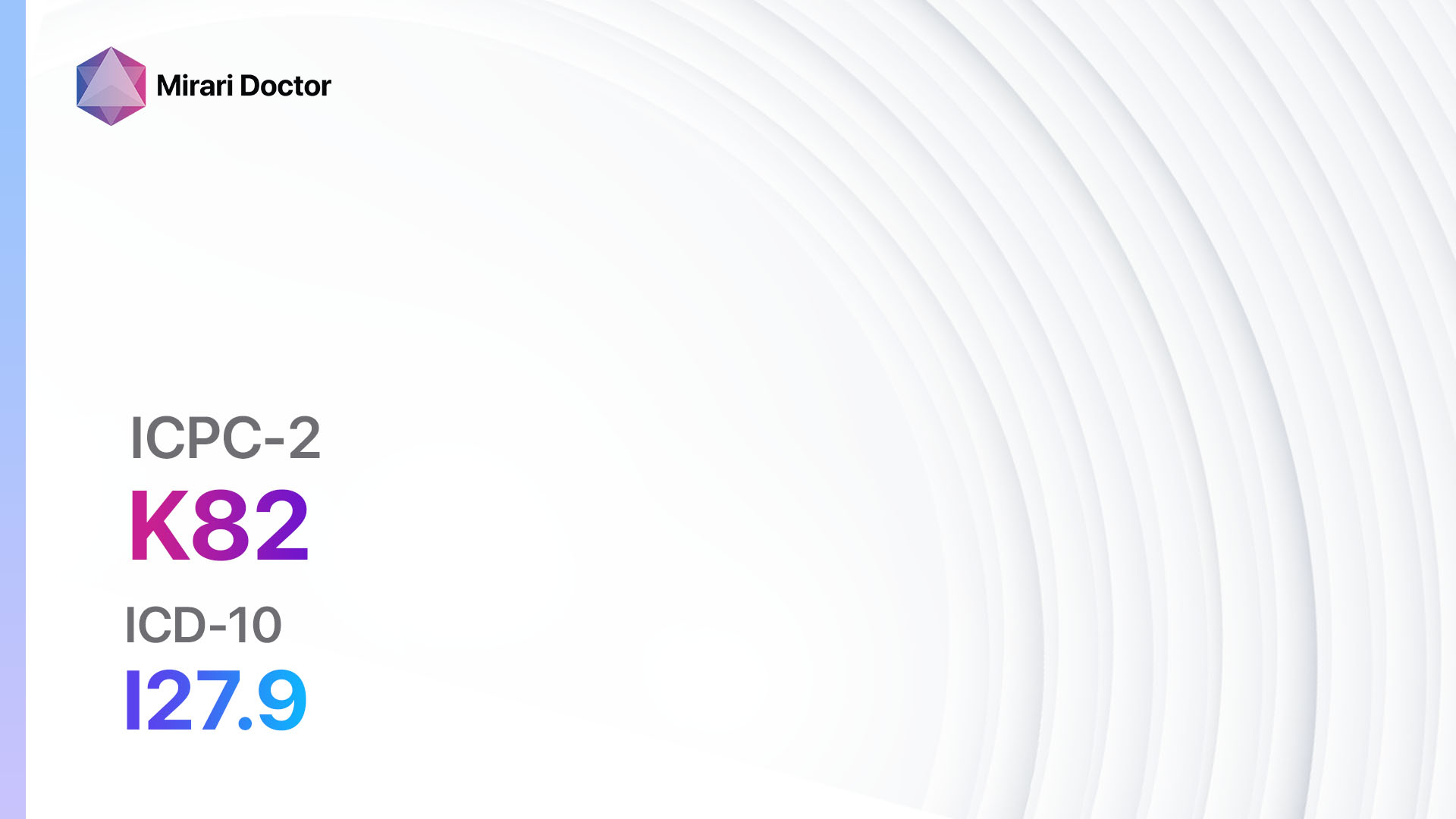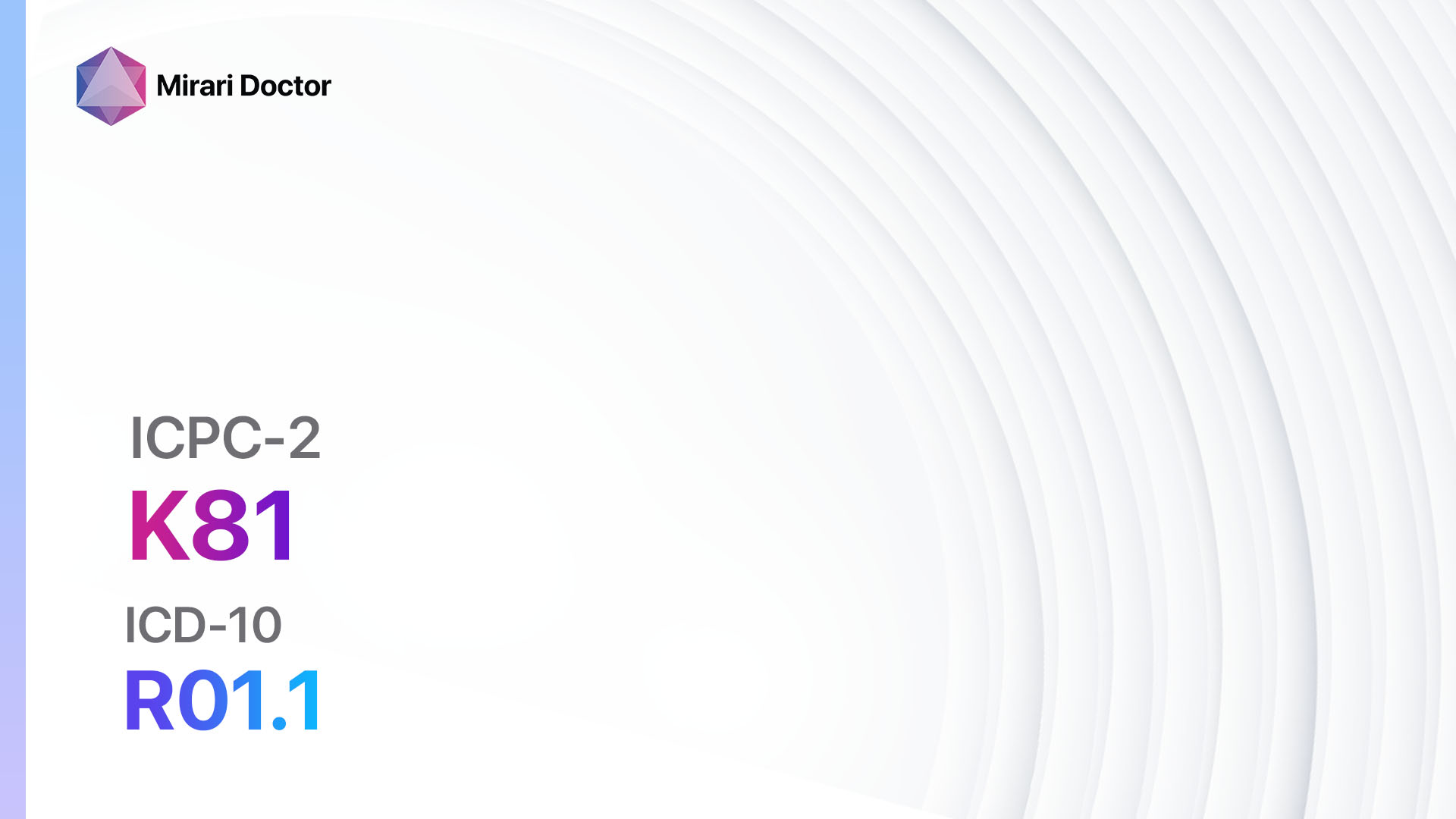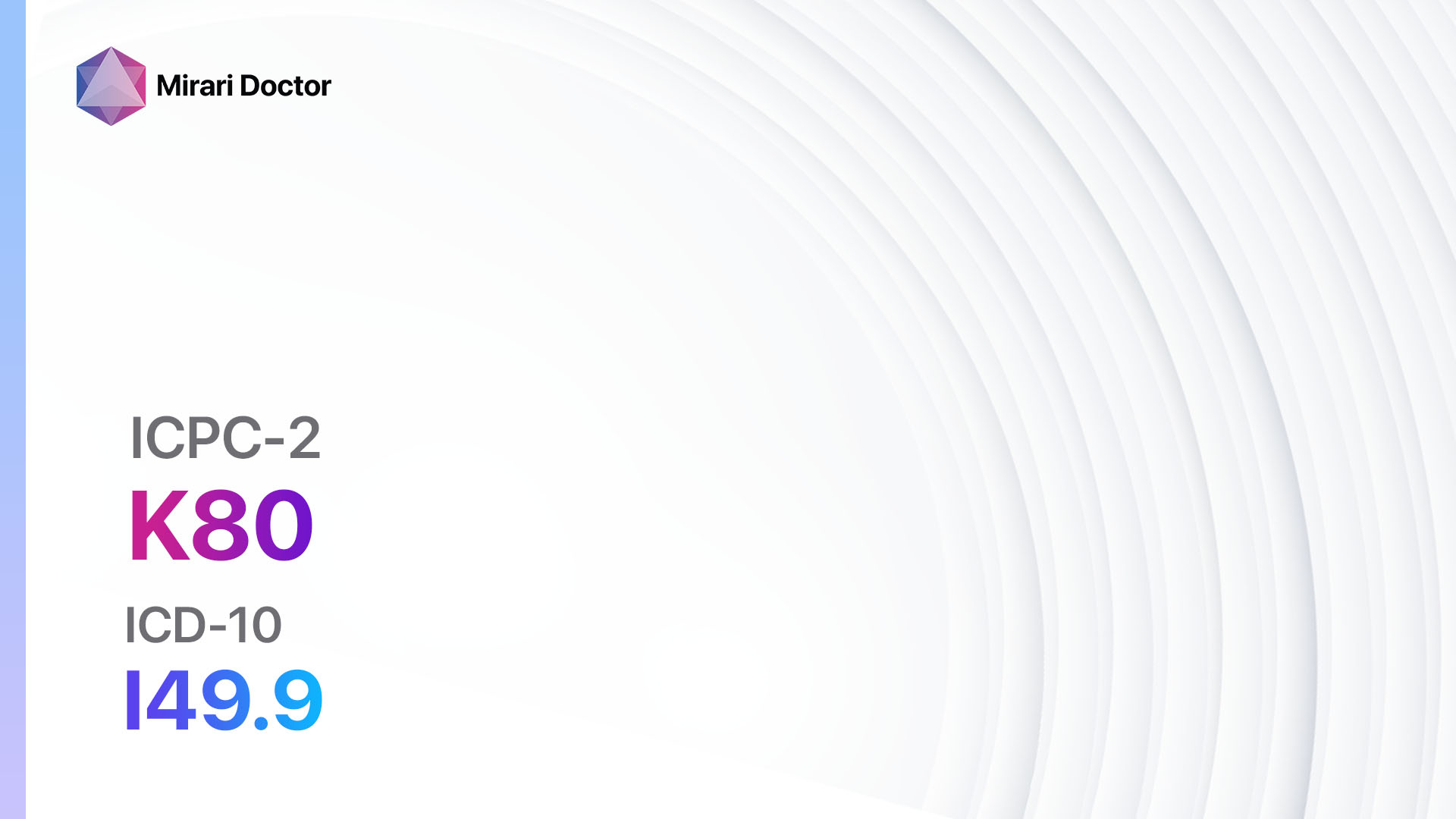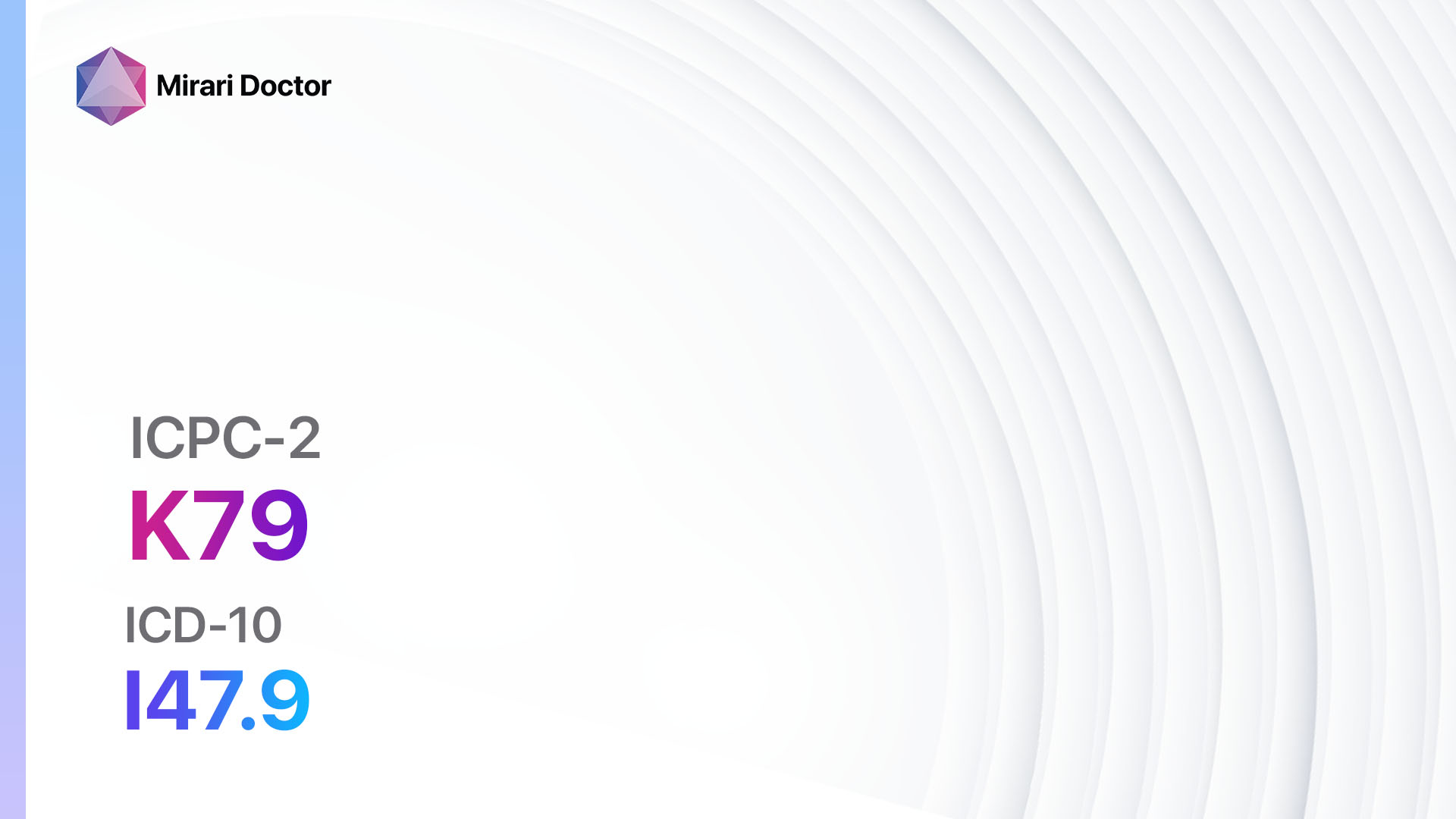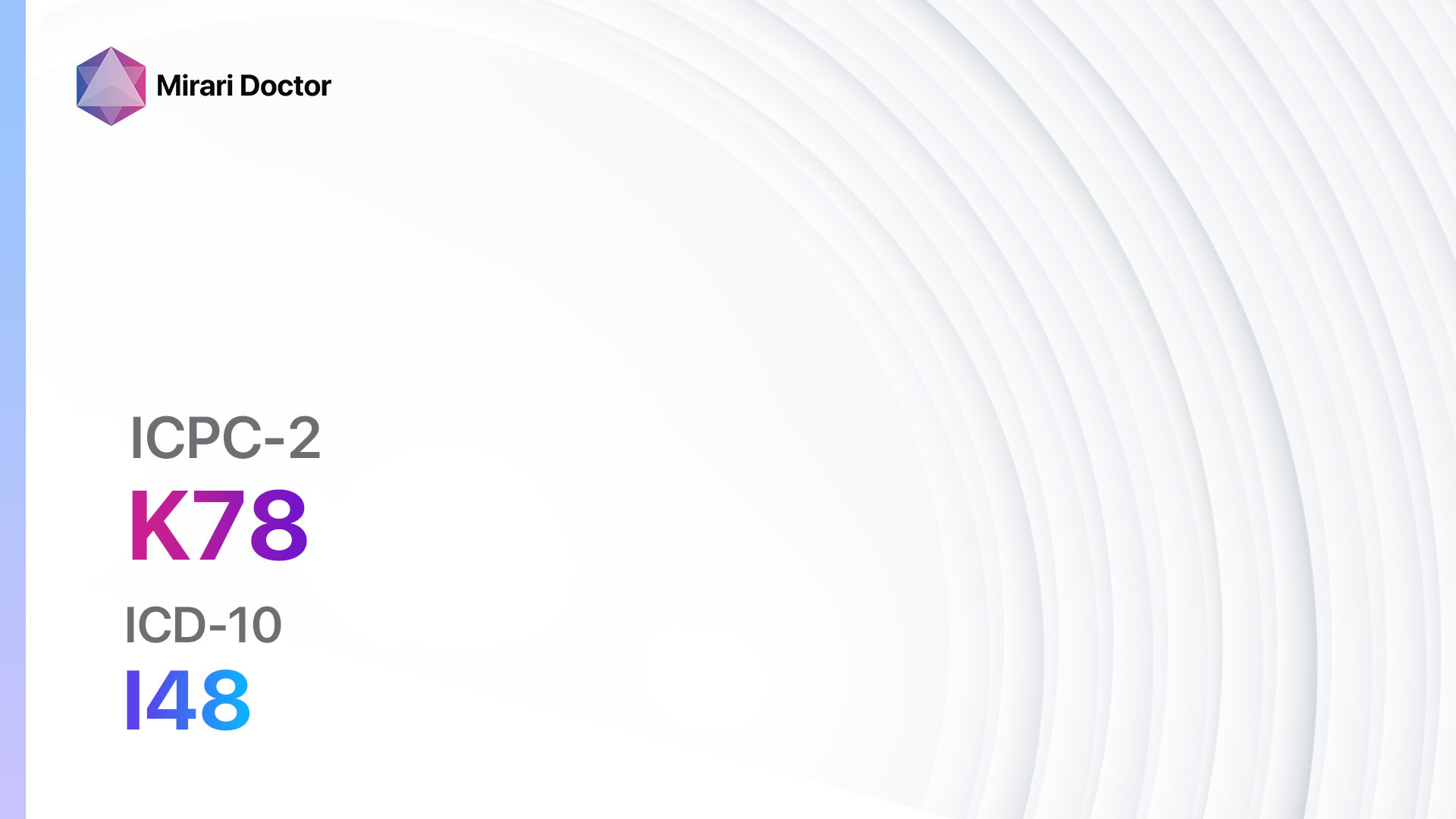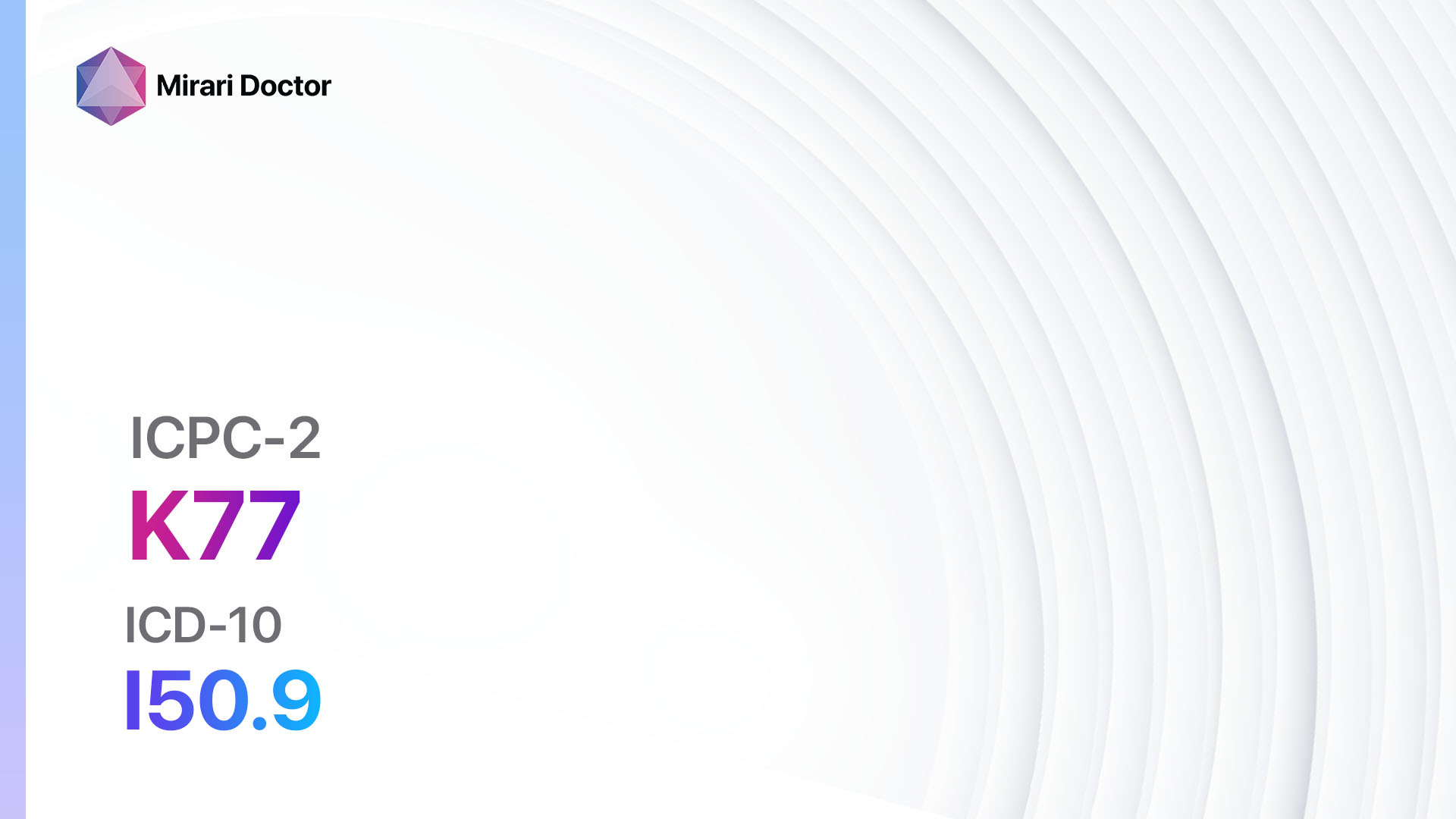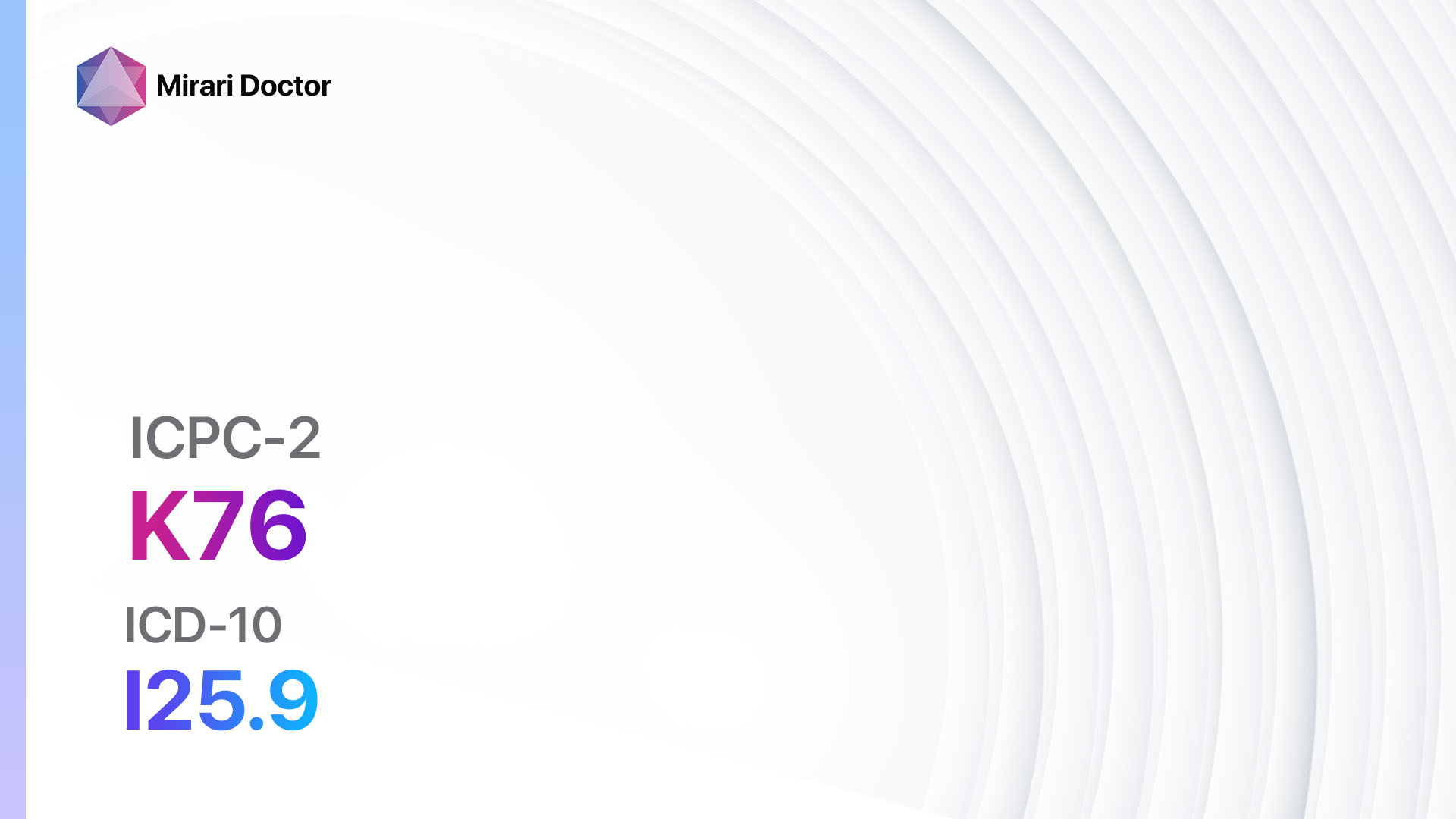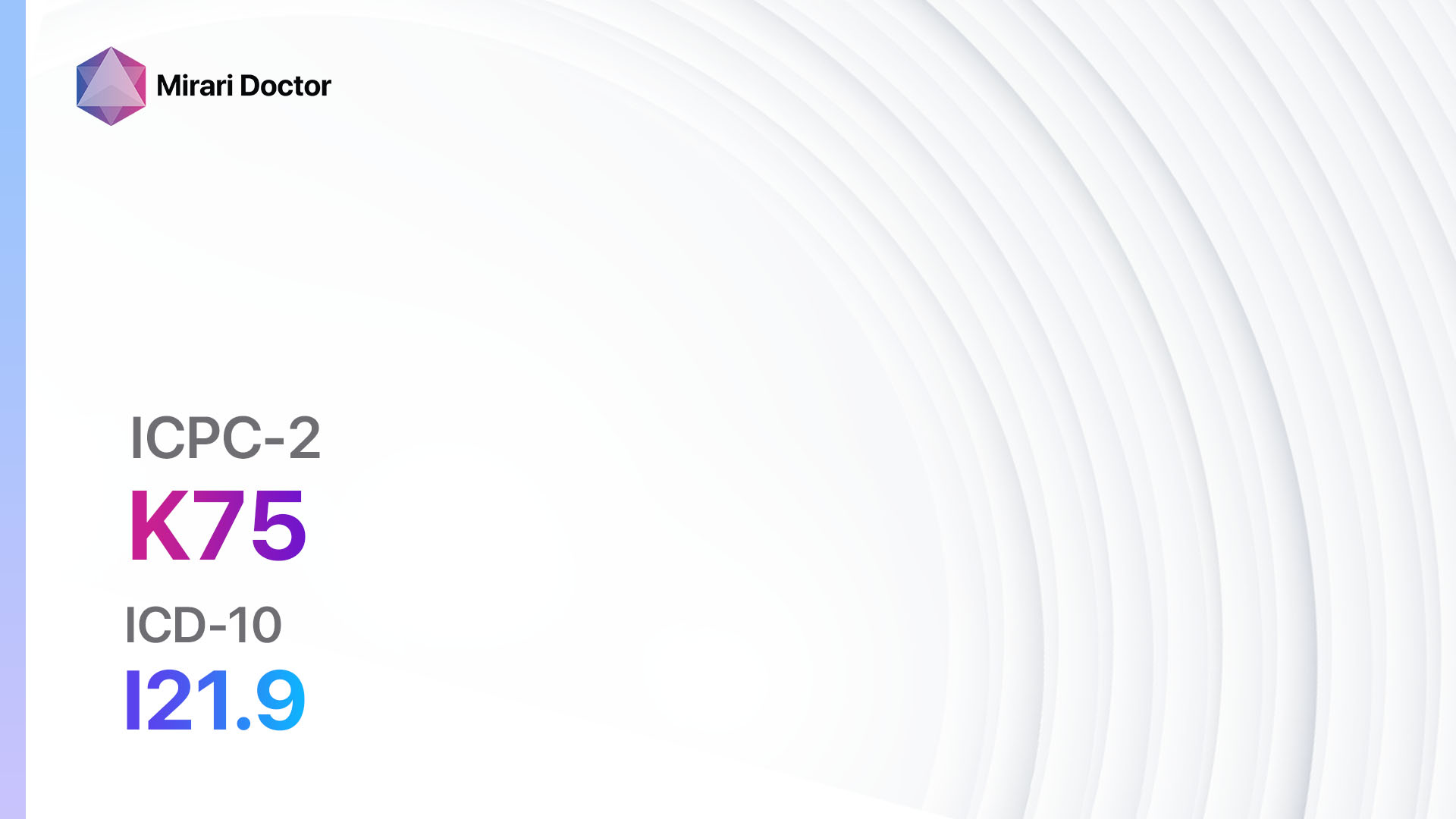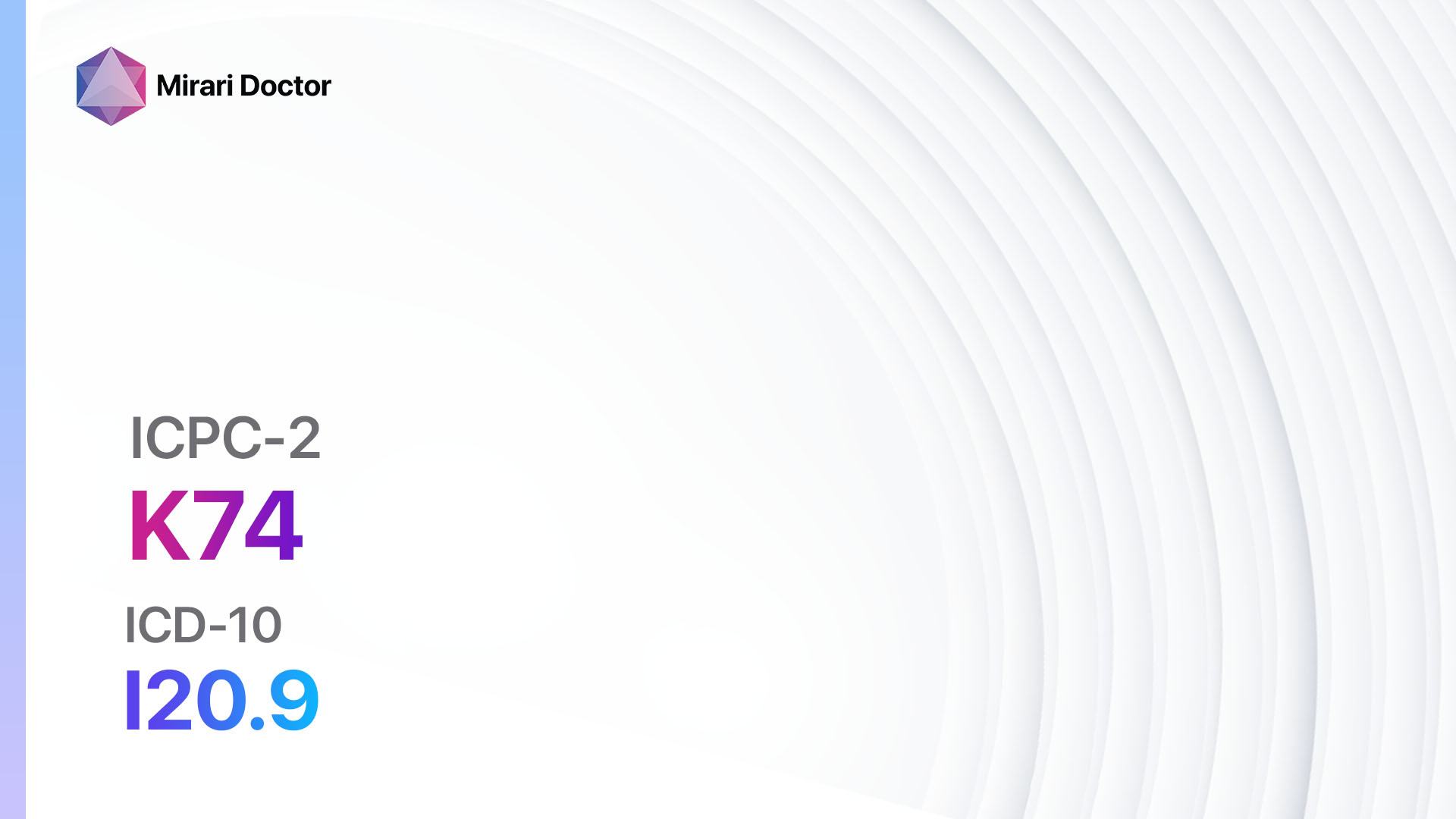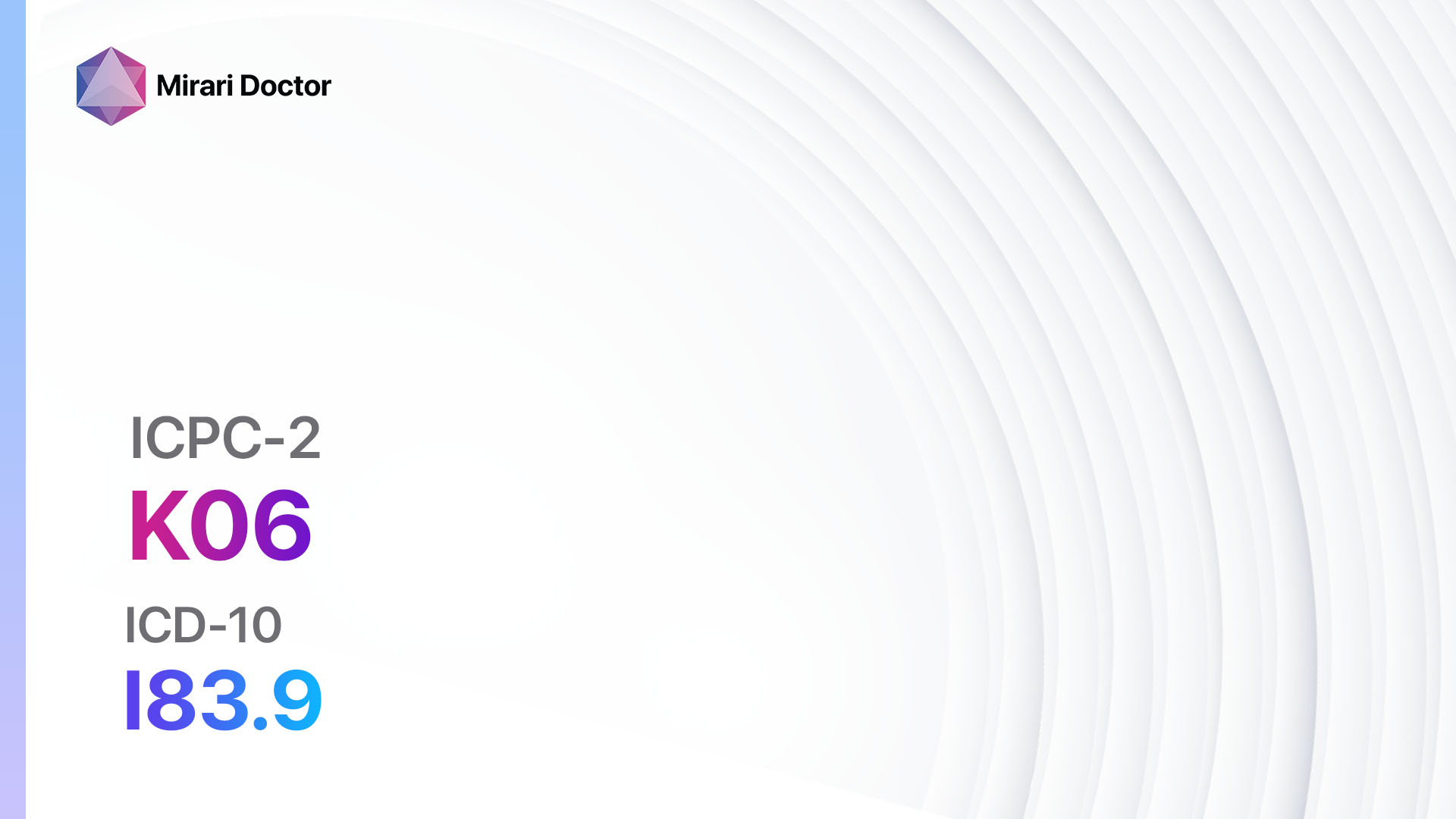
Introduction
Prominent veins, also known as varicose veins, are enlarged, twisted veins that commonly occur in the legs and feet. They can be a cosmetic concern for some individuals, but they can also cause discomfort, pain, and other symptoms. The aim of this guide is to provide a comprehensive overview of the symptoms, causes, diagnostic steps, possible interventions, and lifestyle changes that can help manage and treat prominent veins.[1][2]
Codes
- ICPC-2 Code: K06 Prominent veins
- ICD-10 Code: I83.9 Varicose veins of lower extremities without ulcer or inflammation[3]
Symptoms
- Bulging, twisted veins that are visible under the skin[4]
- Dark purple or blue color of the veins[5]
- Achy or heavy feeling in the legs[6]
- Pain or discomfort after sitting or standing for long periods[7]
- Swelling, throbbing, or cramping in the legs[8]
- Itching or irritated skin over the veins[9]
- Skin discoloration or ulcers in severe cases[10]
Causes
- Weak or damaged valves in the veins: Veins have one-way valves that prevent blood from flowing backward. When these valves weaken or become damaged, blood can pool in the veins, causing them to enlarge and become varicose.
- Age: The risk of developing varicose veins increases with age.
- Gender: Women are more likely to develop varicose veins than men, possibly due to hormonal changes during pregnancy and menopause.
- Pregnancy: Pregnancy increases the volume of blood in the body, which can put added pressure on the veins. Hormonal changes during pregnancy can also weaken the vein walls.
- Family history: If close family members have varicose veins, there is an increased risk of developing them.
- Obesity: Excess weight puts additional pressure on the veins.
- Prolonged standing or sitting: Jobs that require long periods of standing or sitting can increase the risk of developing varicose veins.
Diagnostic Steps
Medical History
- Gather information about the patient’s symptoms, including the duration and severity.
- Ask about any family history of varicose veins or other venous disorders.
- Inquire about any risk factors, such as pregnancy, obesity, or prolonged periods of standing or sitting.
- Assess the patient’s overall health and any other medical conditions that may contribute to the development of varicose veins.
Physical Examination
- Inspect the legs and feet for visible varicose veins, their size, and any associated skin changes.
- Palpate the veins to assess their texture, tenderness, and temperature.
- Check for any swelling or edema in the legs.
- Evaluate the patient’s gait and mobility to determine any functional limitations caused by varicose veins.
Laboratory Tests
- No specific laboratory tests are required for the diagnosis of varicose veins.
Diagnostic Imaging
- Duplex ultrasound: This non-invasive imaging test uses sound waves to visualize the veins and assess blood flow. It can help identify any blood clots or other abnormalities in the veins.
Other Tests
- Venogram: In some cases, a venogram may be performed to obtain a more detailed image of the veins. This involves injecting a contrast dye into the veins and taking X-ray images.
Follow-up and Patient Education
- Schedule regular follow-up appointments to monitor the progression of varicose veins and assess the effectiveness of interventions.
- Provide education on self-care measures, lifestyle modifications, and possible interventions to manage varicose veins.
Possible Interventions
Traditional Interventions
Medications:
Top 5 drugs for varicose veins:
- Compression stockings: These stockings apply pressure to the legs, helping to improve blood flow and reduce swelling. They are available over-the-counter and can range in price from $20 to $100.
- Nonsteroidal anti-inflammatory drugs (NSAIDs): These medications can help relieve pain and reduce inflammation associated with varicose veins. Common examples include ibuprofen and naproxen, which can cost between $5 and $20 for a month’s supply.
- Topical creams: Certain creams or ointments containing ingredients like horse chestnut seed extract or witch hazel may provide temporary relief from symptoms. Prices can vary depending on the brand and size of the product.
- Phlebotonics: These medications improve venous tone and reduce inflammation. Examples include diosmin and hesperidin, which can cost between $20 and $50 for a month’s supply.
- Anticoagulants: In some cases, anticoagulant medications may be prescribed to prevent blood clots from forming in the varicose veins. Common examples include warfarin and rivaroxaban, which can range in price from $10 to $100 for a month’s supply.
Surgical Procedures:
- Sclerotherapy: This procedure involves injecting a solution into the varicose veins, causing them to collapse and fade. The cost of sclerotherapy can range from $300 to $1,500 per session.
- Endovenous laser treatment (EVLT): This minimally invasive procedure uses laser energy to seal off the affected veins. The cost of EVLT can range from $1,500 to $3,000 per leg.
- Radiofrequency ablation: Similar to EVLT, this procedure uses radiofrequency energy to heat and close the varicose veins. The cost of radiofrequency ablation can range from $1,500 to $3,000 per leg.
- Vein stripping and ligation: This surgical procedure involves removing the affected veins through small incisions. The cost of vein stripping and ligation can range from $3,000 to $7,000.
- Ambulatory phlebectomy: This procedure involves making small incisions to remove the varicose veins. The cost of ambulatory phlebectomy can range from $1,500 to $3,000 per leg.
Alternative Interventions
- Acupuncture: May help improve blood flow and reduce pain. Cost: $60-$120 per session.
- Chelation therapy: Controversial treatment involving the administration of chelating agents to remove heavy metals from the body. Cost: $75-$150 per session.
- Herbal supplements: Some herbs, such as horse chestnut and butcher’s broom, may have potential benefits for improving circulation. Cost: Varies depending on the specific supplement.
- Exercise and physical therapy: Regular exercise, such as walking or swimming, can help improve circulation and strengthen the leg muscles. The cost of exercise and physical therapy can vary depending on individual preferences and access to facilities.
- Weight management: Maintaining a healthy weight can reduce the pressure on the veins and improve overall circulation. Cost: Varies depending on individual preferences and access to resources.
Lifestyle Interventions
- Elevate the legs: Raising the legs above heart level can help reduce swelling and improve blood flow. Cost: Free.
- Avoid prolonged standing or sitting: Taking breaks and moving around regularly can help prevent blood from pooling in the veins. Cost: Free.
- Wear compression stockings: These stockings apply pressure to the legs, helping to improve blood flow and reduce swelling. Cost: $20-$100.
- Exercise regularly: Engaging in regular physical activity, such as walking or swimming, can improve circulation and strengthen the leg muscles. Cost: Varies depending on individual preferences and access to facilities.
- Maintain a healthy weight: Losing excess weight can reduce the pressure on the veins and improve overall circulation. Cost: Varies depending on individual preferences and access to resources.
It is important to note that the cost ranges provided are approximate and may vary depending on the location and availability of the interventions. It is recommended to consult with a healthcare professional for personalized advice and treatment options.
Mirari Cold Plasma Alternative Intervention
Understanding Mirari Cold Plasma
- Safe and Non-Invasive Treatment: Mirari Cold Plasma is a safe and non-invasive treatment option for various skin conditions. It does not require incisions, minimizing the risk of scarring, bleeding, or tissue damage.
- Efficient Extraction of Foreign Bodies: Mirari Cold Plasma facilitates the removal of foreign bodies from the skin by degrading and dissociating organic matter, allowing easier access and extraction.
- Pain Reduction and Comfort: Mirari Cold Plasma has a local analgesic effect, providing pain relief during the treatment, making it more comfortable for the patient.
- Reduced Risk of Infection: Mirari Cold Plasma has antimicrobial properties, effectively killing bacteria and reducing the risk of infection.
- Accelerated Healing and Minimal Scarring: Mirari Cold Plasma stimulates wound healing and tissue regeneration, reducing healing time and minimizing the formation of scars.
Mirari Cold Plasma Prescription
Video instructions for using Mirari Cold Plasma Device – K06 Prominent veins (ICD-10:I83.9)
| Mild | Moderate | Severe |
| Mode setting: 1 (Infection) Location: 5 (Lungs) Morning: 15 minutes, Evening: 15 minutes |
Mode setting: 1 (Infection) Location: 5 (Lungs) Morning: 30 minutes, Lunch: 30 minutes, Evening: 30 minutes |
Mode setting: 1 (Infection) Location: 5 (Lungs) Morning: 30 minutes, Lunch: 30 minutes, Evening: 30 minutes |
| Mode setting: 2 (Wound Healing) Location: 5 (Lungs) Morning: 15 minutes, Evening: 15 minutes |
Mode setting: 2 (Wound Healing) Location: 5 (Lungs) Morning: 30 minutes, Lunch: 30 minutes, Evening: 30 minutes |
Mode setting: 2 (Wound Healing) Location: 5 (Lungs) Morning: 30 minutes, Lunch: 30 minutes, Evening: 30 minutes |
| Mode setting: 7 (Immunotherapy) Location: 1 (Sacrum) Morning: 15 minutes, Evening: 15 minutes |
Mode setting: 7 (Immunotherapy) Location: 1 (Sacrum) Morning: 30 minutes, Lunch: 30 minutes, Evening: 30 minutes |
Mode setting: 7 (Immunotherapy) Location: 1 (Sacrum) Morning: 30 minutes, Lunch: 30 minutes, Evening: 30 minutes |
| Mode setting: 7 (Immunotherapy) Location: 4 (Heart, Bile & Pancreas) Morning: 15 minutes, Evening: 15 minutes |
Mode setting: 7 (Immunotherapy) Location: 4 (Heart, Bile & Pancreas) Morning: 30 minutes, Lunch: 30 minutes, Evening: 30 minutes |
Mode setting:7 (Immunotherapy) Location: 4 (Heart, Bile & Pancreas) Morning: 30 minutes, Lunch: 30 minutes, Evening: 30 minutes |
| Total Morning: 60 minutes approx. $10 USD, Evening: 60 minutes approx. $10 USD |
Total Morning: 120 minutes approx. $20 USD, Lunch: 120 minutes approx. $20 USD, Evening: 120 minutes approx. $20 USD, |
Total Morning: 120 minutes approx. $20 USD, Lunch: 120 minutes approx. $20 USD, Evening: 120 minutes approx. $20 USD, |
| Usual treatment for 7-60 days approx. $140 USD – $1200 USD | Usual treatment for 6-8 weeks approx. $2,520 USD – $3,360 USD |
Usual treatment for 3-6 months approx. $5,400 USD – $10,800 USD
|
 |
|
Use the Mirari Cold Plasma device to treat Prominent veins effectively.
WARNING: MIRARI COLD PLASMA IS DESIGNED FOR THE HUMAN BODY WITHOUT ANY ARTIFICIAL OR THIRD PARTY PRODUCTS. USE OF OTHER PRODUCTS IN COMBINATION WITH MIRARI COLD PLASMA MAY CAUSE UNPREDICTABLE EFFECTS, HARM OR INJURY. PLEASE CONSULT A MEDICAL PROFESSIONAL BEFORE COMBINING ANY OTHER PRODUCTS WITH USE OF MIRARI.
Step 1: Cleanse the Skin
- Start by cleaning the affected area of the skin with a gentle cleanser or mild soap and water. Gently pat the area dry with a clean towel.
Step 2: Prepare the Mirari Cold Plasma device
- Ensure that the Mirari Cold Plasma device is fully charged or has fresh batteries as per the manufacturer’s instructions. Make sure the device is clean and in good working condition.
- Switch on the Mirari device using the power button or by following the specific instructions provided with the device.
- Some Mirari devices may have adjustable settings for intensity or treatment duration. Follow the manufacturer’s instructions to select the appropriate settings based on your needs and the recommended guidelines.
Step 3: Apply the Device
- Place the Mirari device in direct contact with the affected area of the skin. Gently glide or hold the device over the skin surface, ensuring even coverage of the area experiencing.
- Slowly move the Mirari device in a circular motion or follow a specific pattern as indicated in the user manual. This helps ensure thorough treatment coverage.
Step 4: Monitor and Assess:
- Keep track of your progress and evaluate the effectiveness of the Mirari device in managing your Prominent veins. If you have any concerns or notice any adverse reactions, consult with your health care professional.
Note
This guide is for informational purposes only and should not replace the advice of a medical professional. Always consult with your healthcare provider or a qualified medical professional for personal advice, diagnosis, or treatment. Do not solely rely on the information presented here for decisions about your health. Use of this information is at your own risk. The authors of this guide, nor any associated entities or platforms, are not responsible for any potential adverse effects or outcomes based on the content.
Mirari Cold Plasma System Disclaimer
- Purpose: The Mirari Cold Plasma System is a Class 2 medical device designed for use by trained healthcare professionals. It is registered for use in Thailand and Vietnam. It is not intended for use outside of these locations.
- Informational Use: The content and information provided with the device are for educational and informational purposes only. They are not a substitute for professional medical advice or care.
- Variable Outcomes: While the device is approved for specific uses, individual outcomes can differ. We do not assert or guarantee specific medical outcomes.
- Consultation: Prior to utilizing the device or making decisions based on its content, it is essential to consult with a Certified Mirari Tele-Therapist and your medical healthcare provider regarding specific protocols.
- Liability: By using this device, users are acknowledging and accepting all potential risks. Neither the manufacturer nor the distributor will be held accountable for any adverse reactions, injuries, or damages stemming from its use.
- Geographical Availability: This device has received approval for designated purposes by the Thai and Vietnam FDA. As of now, outside of Thailand and Vietnam, the Mirari Cold Plasma System is not available for purchase or use.
References
- Varicose veins – Symptoms and causes. Mayo Clinic. https://www.mayoclinic.org/diseases-conditions/varicose-veins/symptoms-causes/syc-20350643
- Varicose veins. National Health Service (NHS). https://www.nhs.uk/conditions/varicose-veins/
- ICD-10 Code I83.9 – Varicose veins of lower extremities without ulcer or inflammation. ICD.Codes. https://icd.codes/icd10cm/I839
- Varicose veins. MedlinePlus. https://medlineplus.gov/varicoseveins.html
- Varicose veins. Cleveland Clinic. https://my.clevelandclinic.org/health/diseases/17722-varicose-veins
- Varicose veins. Johns Hopkins Medicine. https://www.hopkinsmedicine.org/health/conditions-and-diseases/varicose-veins
- Varicose veins. Harvard Health Publishing. https://www.health.harvard.edu/diseases-and-conditions/varicose-veins
- Varicose veins. American Academy of Dermatology Association. https://www.aad.org/public/diseases/a-z/varicose-veins-overview
- Varicose veins. American Society for Dermatologic Surgery. https://www.asds.net/skin-experts/skin-conditions/varicose-veins
- Varicose veins. American Venous Forum. https://www.veinforum.org/medical-resources/patient-education/varicose-veins/
Related articles
Made in USA


